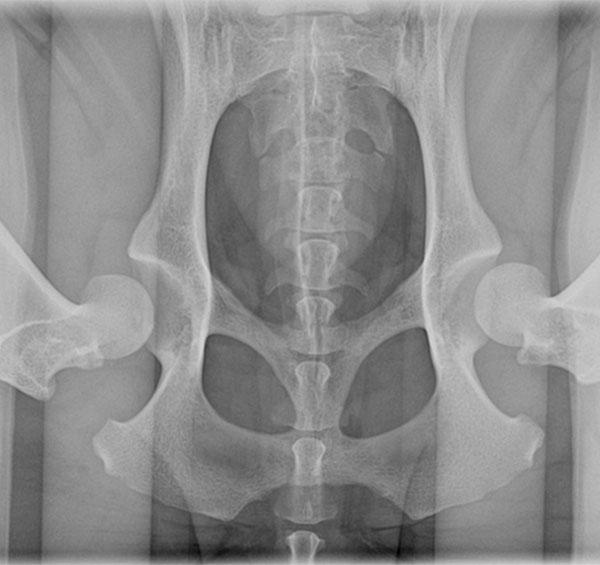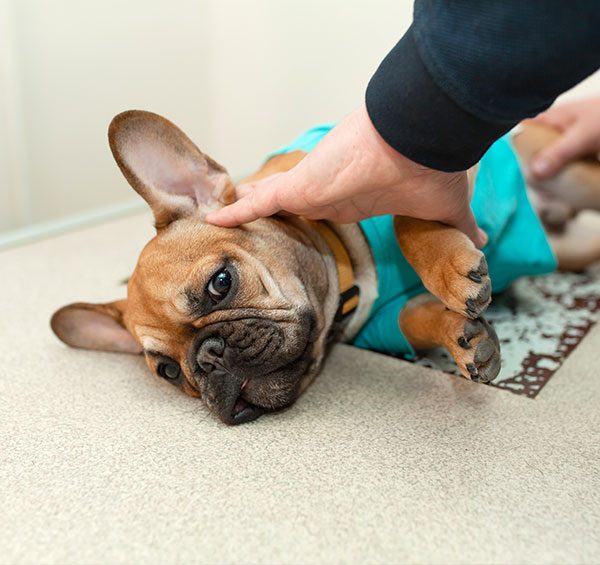
Learn about services for a PennHIP Xray in Mount Pleasant SC
What is PennHIP? PennHIP is an x-ray of hip joints commonly used to determine if your pet has hip dysplasia, is at risk of hip dysplasia, etc.) PennHIP is a multifaceted radiographic screening method for canine hip evaluation. The technique assesses the quality of the hips and quantitatively measures canine hip joint laxity. It is used to screen dogs for canine hip dysplasia and osteoarthritis, diseases that cause pain and disability in dogs who have it.
Upon completion of PennHip radiographs by a certified veterinarian, the images are sent to the PennHIP Analysis Center for evaluation. Owners then receive a full report explaining the degree of hip laxity found in their dog, an analysis of how their dog’s hips compare to the average dog of their breed, and what they can expect to see moving forward regarding hip pain and disability. If hip dysplasia is detected, information regarding how to best protect their dog’s hips moving forward also is provided.
PennHIP Xray in Mount Pleasant SC: What advantage does it have over OFA (Orthopedic Foundation of America)
Traditional hip screening imaging (OFA radiographs) consists of a single radiographic view: the hip extended view, otherwise known as the”OFA view.” This single view is used to obtain information regarding the existence of osteoarthritis (OA) of the hip joint. This view is subjectively scored for osteoarthritis (which develops later in the disease process) and often cannot assess the underlying joint laxity that is causing the arthritis. Due to the often late development of visible disease, OFA radiographs are recommended to be taken only in dogs 2 years of age or older.
PennHIP radiographs consist of 3 views: the distraction view, the compression view and the hip-extended view. The distraction view and compression view are used to obtain accurate and precise measurements of joint laxity and congruity, respectively. The hip-extension view is also reviewed to obtain supplementary information regarding any existing OA. Due to these additional, quantitative measurements, canine hip dysplasia can be detected much earlier and can be performed in dogs as early as 16 weeks old. If you need a PennHIP Xray in Mount Pleasant SC, Safe Harbor Animal Hospital is here to help.


What advantage does it have over OFA (Orthopedic Foundation of America)
Traditional hip screening imaging (OFA radiographs) consists of a single radiographic view: the hip extended view, otherwise known as the OFA view. This single view is used to obtain information regarding the existence of osteoarthritis (OA) of the hip joint. This view is subjectively scored for osteoarthritis (which develops later in the disease process) and often cannot assess the underlying joint laxity that is causing the arthritis. Due to the often late development of visible disease, OFA radiographs are recommended to be taken only in dogs 2 years of age or older.
PennHip radiographs consist of 3 views: the distraction view, the compression view and the hip-extended view. The distraction view and compression view are used to obtain accurate and precise measurements of joint laxity and congruity, respectively. The hip-extension view is also reviewed to obtain supplementary information regarding any existing OA. Due to these additional, quantitative measurements, canine hip dysplasia can be detected much earlier and can be performed in dogs as early as 16 weeks old.



